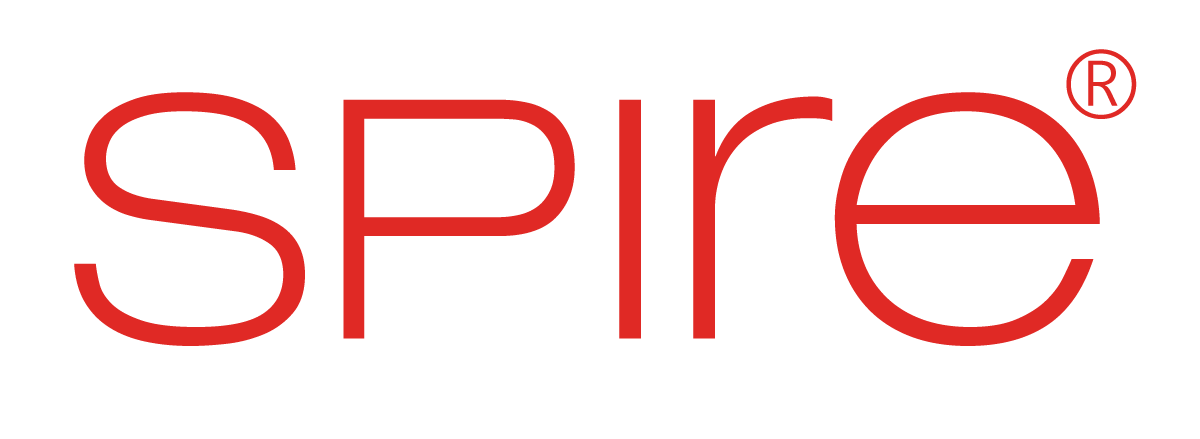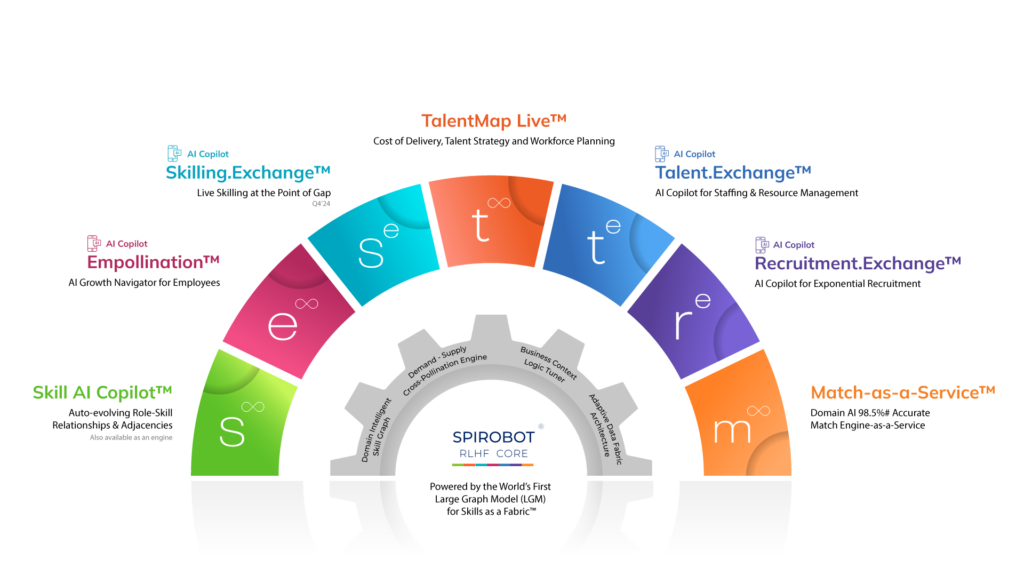The Large Graph Model (LGM) for skills is a revolutionary talent management approach that transforms organizations into agile, future-ready powerhouses. By optimizing talent, driving innovation, and unlocking growth potential, LGM for Skills redefines how businesses approach their workforce.
Understanding the Large Graph Model (LGM) for skills
At its core, the LGM for skills is a sophisticated network that maps out the complex relationships between skills, competencies, and qualifications across different industries and roles. Unlike traditional models that treat skills as isolated entities, LGM for skills creates a comprehensive and dynamic picture of the entire skill landscape. This enables organizations to gain deeper insights into their workforce, identify skill gaps, and make data-driven decisions to optimize talent utilization.
The LGM for skills is a sophisticated network mapping the complex relationships between skills, competencies, and qualifications across different industries and roles.
How the LGM for Skills Works
The LGM for skills functions like a well-oiled machine, continuously learning and evolving to provide the most up-to-date insights. Here’s a closer look at its inner workings:
- Data Acquisition and Aggregation: The LGM for skills is a data sponge, meticulously gathering information from diverse sources. This includes job descriptions, employee profiles, industry benchmarks, educational curriculum standards, and emerging market trends. This comprehensive data set is the foundation for building an intricate skill graph.
- Skill Mapping and Relationship Discovery: Once the data is collected, advanced machine learning algorithms go to work. These algorithms act like skilled detectives, meticulously analyzing the data to identify and map the intricate relationships between skills. This includes uncovering skill adjacencies (skills that frequently appear together), hierarchies (progressing from basic to advanced skill levels), and dependencies (skills required to master another skill).
- Continuous Learning and Dynamic Evolution: The LGM for skills is not a static model; it’s a living, breathing entity that continuously learns and adapts. As new data is fed into the system, the model refines its understanding of skill relationships and stays abreast of emerging trends in the job market. This ensures that organizations always have access to the most relevant and accurate skill information.
- Contextual Understanding: skills in Action: The LGM for skills goes beyond simply listing skills; it comprehends the context in which skills are used. This contextual awareness allows the model to differentiate between the same skills required for different industries and roles. For instance, the model understands that “project management” skills in the IT sector may encompass different competencies compared to project management in construction.
Transformative Impact of LGM for Skills on Talent Management
Transformative Impact of LGM for Skills on Talent Management
Talent Acquisition & Onboarding
LGM for Skills can streamline recruitment by identifying the most relevant skills for a specific role and efficiently matching candidates with those skills. This can lead to a faster fill time and reduced recruiting costs. Additionally, LGM for Skills can personalize the onboarding experience for new hires by providing them with targeted training and development opportunities based on their skill gaps.
Enhanced Recruitment and Matching
LGM for skills enables organizations to improve recruitment by accurately matching candidates to job requirements. The model goes beyond direct skill matches to consider related and complementary skills, leading to better hiring decisions and reduced time-to-fill.
Personalized Learning and Development
By understanding an employee’s current skill set and career aspirations, LGM for skills can recommend tailored learning and development paths. This personalized approach increases employee engagement, retention, and overall performance.
Strategic Workforce Planning
LGM for skills provides valuable insights into the current inventory and identifies future skill needs. This enables organizations to make informed decisions about upskilling, reskilling, and workforce planning to ensure they have the right talent to meet future business challenges.
Career Pathing and Internal Mobility
LGM for skills helps employees visualize their career paths within the organization by mapping out how their current skills can be leveraged for new roles and what additional skills are needed for progression. This transparency fosters internal mobility and reduces turnover.
Optimized Talent Utilization
By identifying underutilized skills and matching employees to roles where their skills are best suited, LGM for skills helps organizations optimize talent utilization. This improves operational efficiency, enhances job satisfaction, and boosts productivity.
Performance Management & Development
LGM for Skills can be used to create a more competency-based approach to performance management. By linking skills to performance goals, organizations can provide employees with more meaningful feedback and help them identify areas for development. Additionally, LGM for Skills can recommend personalized learning and development opportunities based on an employee’s current skill set and career goals.
Compensation & Benefits
LGM for Skills can be used to create a more skills-based compensation and benefits structure. By rewarding employees for their skills and the value they bring to the organization, LGM for Skills can help motivate employees and improve retention. Additionally, LGM for Skills can identify high-potential employees and provide them with the development opportunities they need to advance their careers.
Diversity, Equity, and Inclusion (DE&I)
LGM for Skills can be used to promote diversity, equity, and inclusion (DE&I) in the workplace. LGM for Skills can help organizations identify and develop talent from diverse backgrounds by identifying skills gaps and underutilized talent pools. Additionally, LGM for Skills can be used to ensure that all employees have access to the training and development opportunities they need to succeed.
Building a Future-Ready Skills-based Organization
Organizations must adopt a skills-based approach to talent management to leverage LGM’s power for skills fully. This involves:
- Defining Core Competencies: Identifying the essential skills required for organizational success.
- Skill Assessment: Evaluating the current skill inventory to identify gaps and strengths.
- Skill Development: Implementing targeted training and development programs to address skill gaps.
- Performance Management: Linking skills to performance goals and rewards.
- Career Pathing: Creating clear career paths based on skill development.
Organizations can create a more agile, adaptable, and innovative workforce by embracing LGM for skills and adopting a skills-based approach. This, in turn, drives business growth, improves competitiveness, and ensures long-term success.
Spire.AI: Your Partner in LGM-Powered Talent Operations
Spire.AI is your AI Copilot for Talent, empowering organizations to transform into future-ready Skills-Based Organizations (SBOs). We achieve this through a suite of full-stack SaaS talent solutions powered by a cutting-edge Generative Skills AI Platform. Our platform utilizes an integrated, adaptive, and transparent domain-intelligent Large Graph Model (LGM) to revolutionize how you acquire, deploy, manage, reskill, develop, and retain talent.
Our platform utilizes an integrated, adaptive, and transparent domain-intelligent Large Graph Model (LGM) to revolutionize how you acquire, deploy, manage, reskill, develop, and retain talent.
Spire.AI Solutions: LGM for Skills in Action
Our solutions leverage the power of LGM to address every facet of talent management within a Skills-Based Organization:
Auto-Evolving Role-Skill Framework
Spire.AI delivers a dynamic, LGM-based framework that automatically identifies skill combinations and requirements for each role at the base, enhanced, expert level. This framework is:
- Auto-Evolving: Continuously learns and adapts based on new data.
- Domain-Intelligent: Tailored to your specific industry and business context.
- Single Source of Truth: Provides a unified view of skills and role data across all talent systems.
- Ready-to-Use: Quick implementation and configuration to streamline talent processes.
With over 10 million skill nodes within our LGM, Spire.AI offers unmatched granularity and accuracy in defining your organization’s critical skill needs.
Talent Management for Skills-Based Organizations
- Automatic AI-Generated Employee Skill Profiles: Leveraging unstructured data, Spire.AI automatically creates skill profiles for up to 83% of your employees, minimizing manual input.
- Career Path Simulation and Reskilling Recommendations: Empower your workforce with personalized recommendations for upskilling, reskilling, and career growth. Employees can explore opportunities based on aspirations, available positions, or strategic company goals.
- Talent Marketplace: Our innovative platform facilitates internal mobility by continuously matching employee skill sets to internal opportunities. It fosters a “democratized” environment for growth without compromising governance with a unique Business Context Logic (BCL).
Leveraging unstructured data, Spire.AI automatically creates skill profiles for up to 83% of your employees, minimizing manual input.
Talent Acquisition
- Reduce Cost Per Hire: Spire.AI’s LGM-powered capabilities can reduce your cost per hire by up to 70%.
- Fill 90% of Talent Needs: Exceed traditional ATS-assisted recruitment success rates to ensure you have the right talent readily available.
- Faster Hiring & Improved Quality: Faster time-to-hire, fewer interviews, and more efficient sourcing with skill-based resume analysis.
- Domain-Intelligent Matchmaking: Our system delivers a 35% match-to-offer ratio by providing highly relevant candidate selections based on job descriptions.
Resource Management
- Optimize Operating Models: Enhance forecast-to-fulfill processes for professional services, leading to potential operating margin improvements of 1.2% to 2.5%.
Conclusion
The Large Graph Model for Skills is a game-changer for talent management. By providing a comprehensive and dynamic view of skills and their relationships, LGM for skills empowers organizations to make data-driven decisions, optimize talent utilization, and build a future-ready workforce. As the job market continues to evolve, the importance of a sophisticated skill management solution like LGM for skills will only increase.






